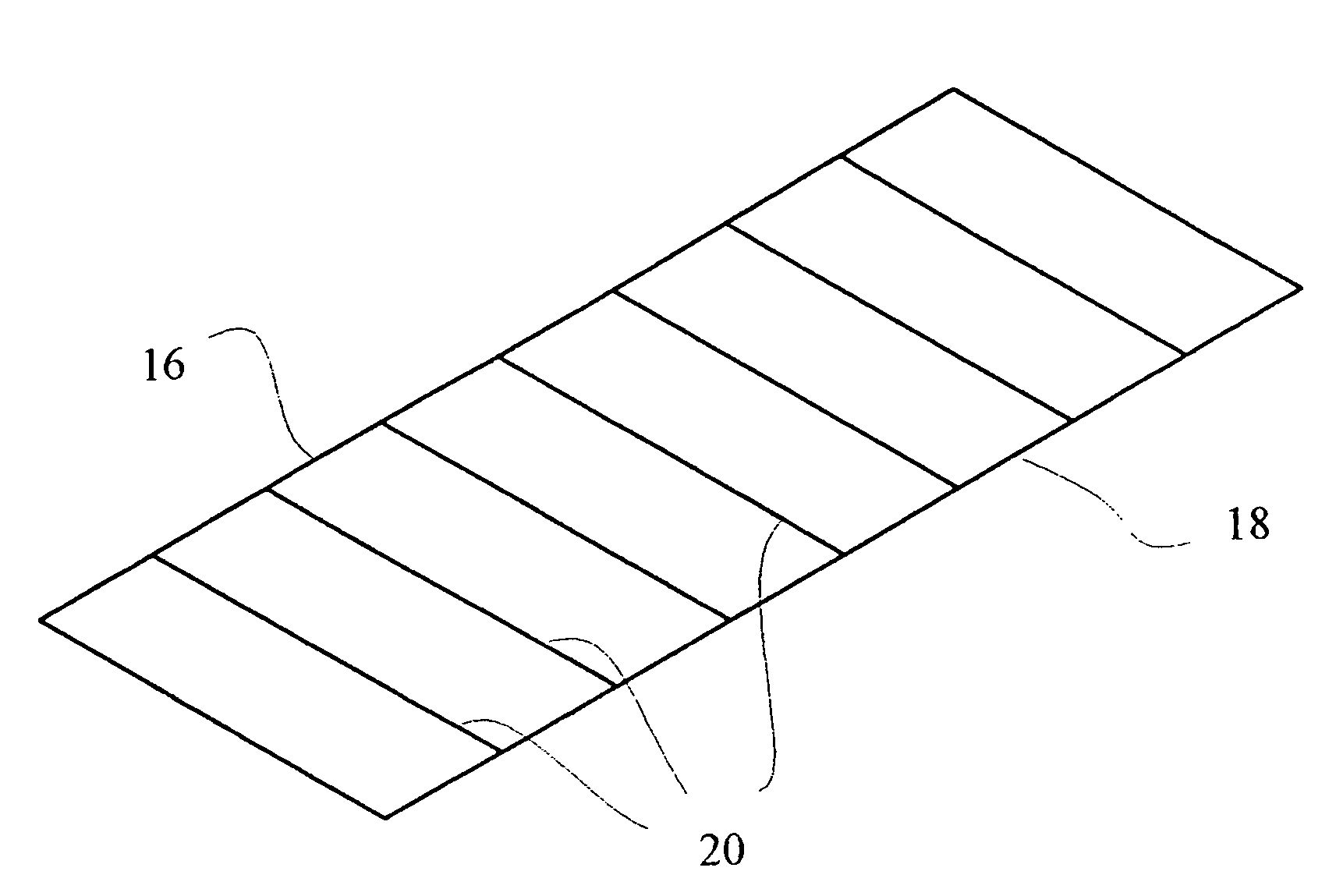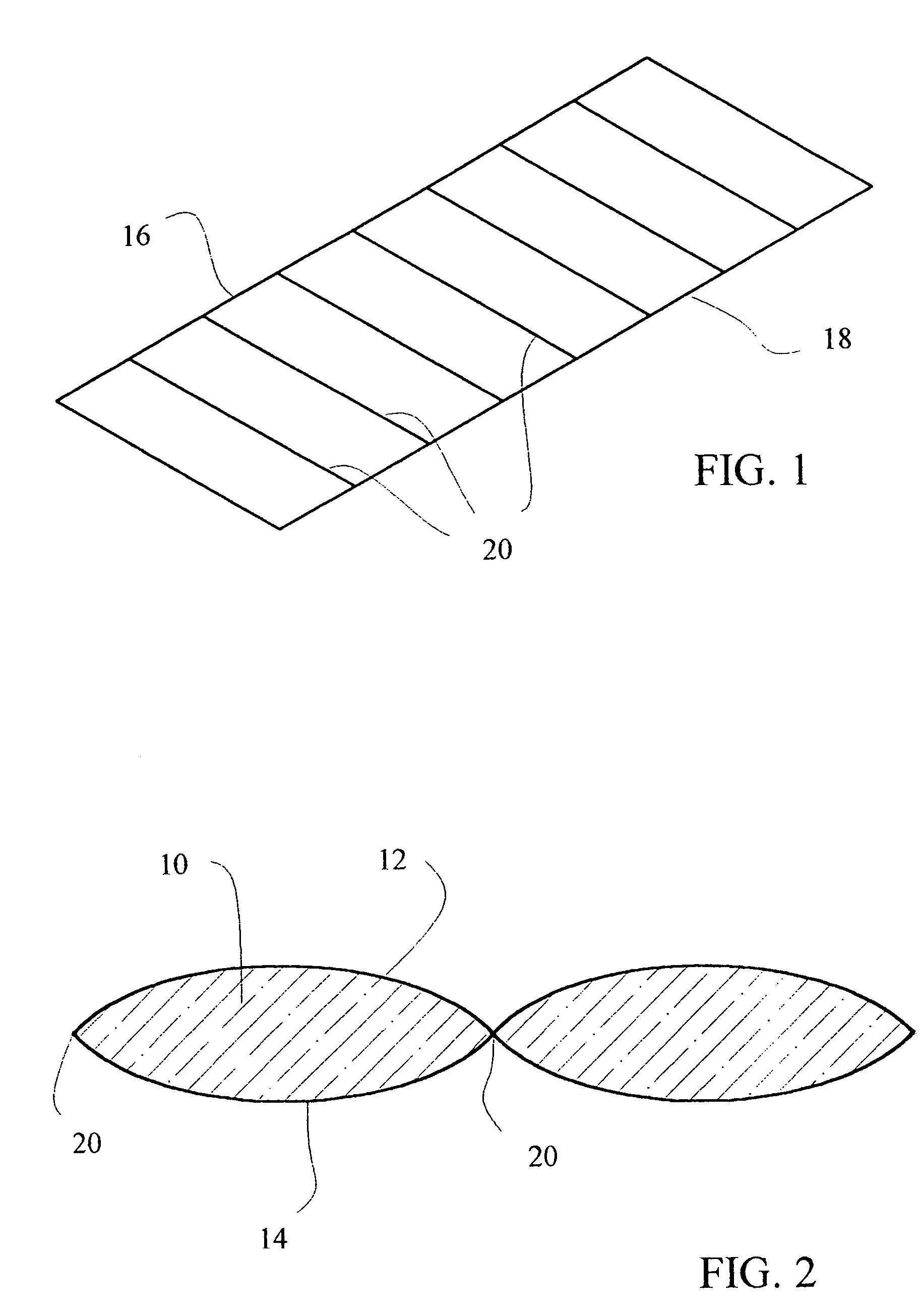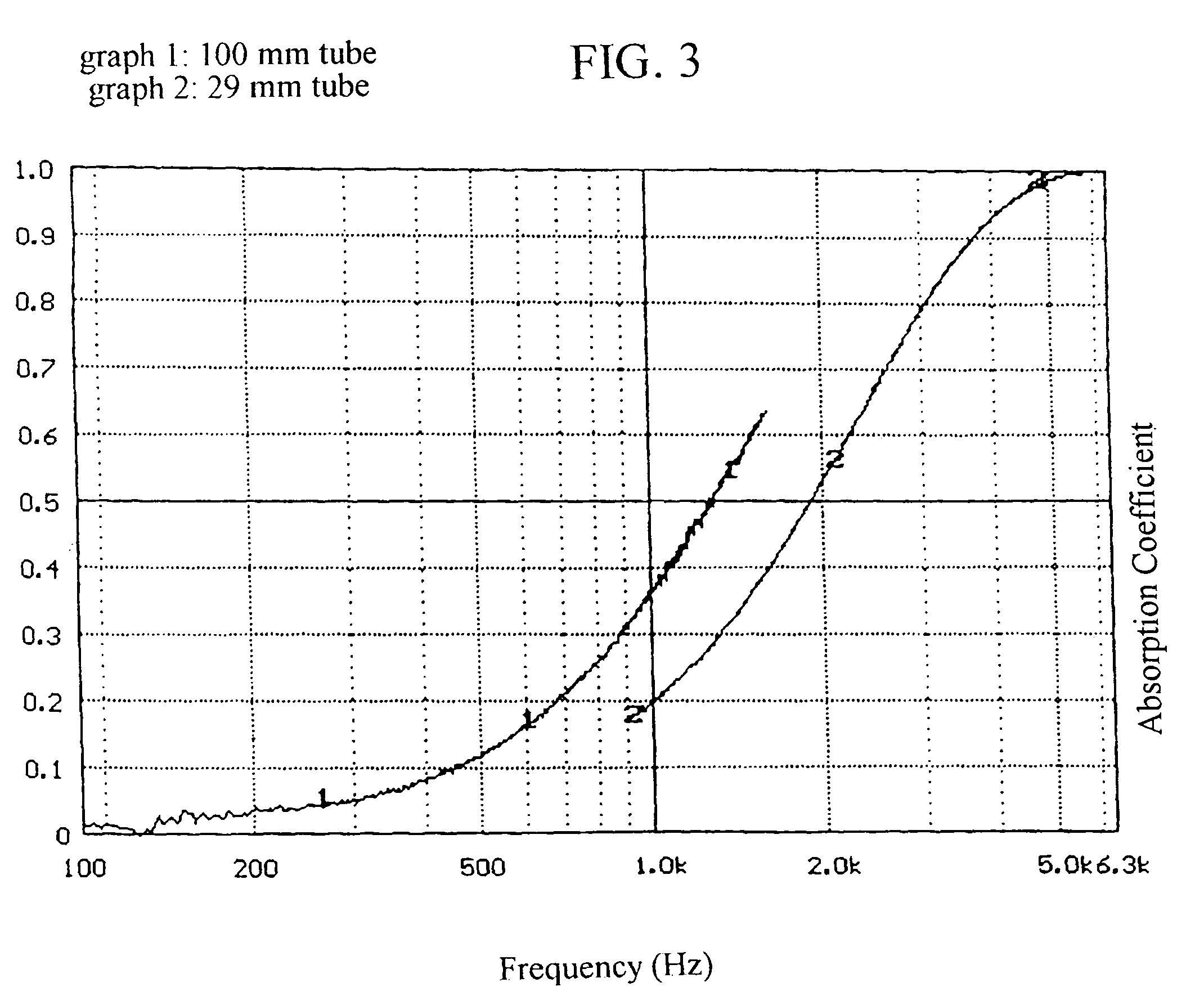Method of making sound insulation with high loft
a sound insulation and loft technology, applied in the field of making sound insulation with high loft, can solve the problems of significant weight of insulation, production cost of a machine includes the cost of insulation, etc., and achieve the effects of reducing thermal bonding, low density, and inhibiting thermal bonding
- Summary
- Abstract
- Description
- Claims
- Application Information
AI Technical Summary
Benefits of technology
Problems solved by technology
Method used
Image
Examples
example 1
[0018]To provide a basis for comparison, a layer of meltblown polypropylene was made by extruding Sunoco CP15000P resin through an array of 2160 holes each having a diameter of 0.014 inch at a temperature of 230° C. and a pressure of 200 psi, discharging into air at ambient conditions onto a surface moving at 20 ft / min. The resulting product was tested and found to have the properties in the table below.
[0019]
Layer thickness:0.25 inchBasis weight:33 g / ft3Density:3.5 lb / ft3Average fiber diameter:2-4 micronFiber diameter range:0.5-10 micronSound attenuation:Unacceptable
example 2
[0020]A second layer of meltblown polypropylene was made be a process identical to that of Example 1, except that 0.6% Paracin 285 was added to the resin before extrusion. The following properties resulted:
[0021]
Layer thickness:0.50-0.75 inchBasis weight:33 g / ft3Density1.5 lb / ft3Average fiber diameter:2-4 micronFiber diameter range:0.5-10 micronSound attenuation:Excellent
[0022]The sound attenuation in each example was determined by ASTM E1050-98 “Standard Test Method for Impedance and Absorption of Acoustical Materials”.
[0023]We had originally thought that it would be necessary to reduce the MFR (melt flow rate) to improve loft, and that longer molecular chains would be needed to produce a springy product; however, we were surprised to find that, in Example 2, even with a high MFR (1500 lbs / hr), the Paracin additive produced both better production rates and better loft.
example 3
[0024]A core layers of the product of Example 2 was produced by blowing it onto a layer of spun-bond polypropylene as described above. Then a scrim layer of melt-blown polypropylene, as described above, was placed on top of the core layers. All three layers were interconnected by forming seams at the lateral edges of the product, and by making bonded transverse seams, extending across the product, at intervals of about ten inches. The seams were created by applying pressure with a seaming wheel against an anvil roll. Sound attenuation testing was conducted as in the previous example, and the data obtained appears in the graph of FIG. 3. Broad spectrum attenuation was observed.
PUM
| Property | Measurement | Unit |
|---|---|---|
| temperature | aaaaa | aaaaa |
| pressure | aaaaa | aaaaa |
| density | aaaaa | aaaaa |
Abstract
Description
Claims
Application Information
 Login to View More
Login to View More - R&D
- Intellectual Property
- Life Sciences
- Materials
- Tech Scout
- Unparalleled Data Quality
- Higher Quality Content
- 60% Fewer Hallucinations
Browse by: Latest US Patents, China's latest patents, Technical Efficacy Thesaurus, Application Domain, Technology Topic, Popular Technical Reports.
© 2025 PatSnap. All rights reserved.Legal|Privacy policy|Modern Slavery Act Transparency Statement|Sitemap|About US| Contact US: help@patsnap.com



